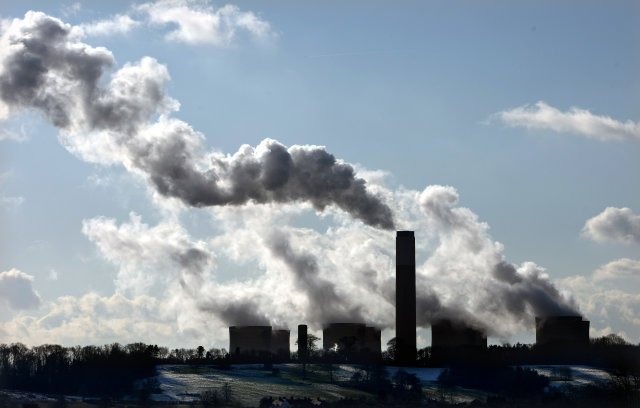The UK has set an ambitious target to become a zero emissions nation by 2050. If it can be achieved, this would make the UK the cleanest country in the world in terms of greenhouse gas emissions. 31 years certainly seems like a long time to achieve this, but is this goal attainable at all? Currently, the figures are not too pleasing. As of October 2018, the UK had an annual greenhouse emission of around 500 million tonnes of CO2. The government has received advice from the Committee on Climate Change regarding reducing this to zero, after a UN report highlighted the urgent need to cut carbon emissions entirely in order to prevent catastrophic climate change. In an interview with BBC News, the UK’s climate minister Claire Perry said: “The report was a really stark and sober piece of work — a good piece of work. Now we know what the goal is, and we know what some of the levers are. “But for me, the constant question is: what is the cost and who’s going to bear that, both in the UK and in the global economy. The question is: what does government need to do, where can the private sector come in, and what technologies will come through?” VW service provider, Vindis, has investigated the issue in further detail, looking into the actions that need to take place in order for this goal to be achieved. Swapping our vehicle To meet a target to scrap petrol and diesel cars by 2040, the government is already making moves to clean up the air by cleaning up on the roads. While we may be a couple of decades away from seeing this ban come into force, it appears that an increasing number of British motorists are already exploring what’s available when it comes to alternative-fuel or LPG vehicles. There are some drivers that are already making the swap. In fact, Next Green Car has reported that the number of new registrations of plug-in cars jumped from just 3,500 in 2013 to over 195,000 as of the end of January 2019. Furthermore, figures released by the Society of Motor Manufacturers and Traders highlighted that electric car sales across the UK has shifted from only close to 500 being registered each month in the early part of 2014 to an average of 5,000 per month throughout 2018. Because of the growing interest in these vehicles, the UK is also making infrastructural changes. While the UK’s network of electric vehicle charging points was recorded in at just a few hundred units as of 2011, there had been more than 5,800 charging locations, 9,800 charging devices and 16,700 connectors installed by June 2018. We may still be quite a while away from seeing all vehicles on the roads of the UK being run on alternative fuels — the latest vehicle data from the SMMT stated that the car registrations market share for January 2019 was 64.08 per cent petrol, 29.08 per cent diesel and 6.84 per cent alternative-fuel vehicles, for example — but it appears that things are at least moving in the right direction. Making the greener switch It’s fair to say that low-carbon alternatives could be the way forward if we’re to realistically meet our target. It appears the nation is already assisting in this area too. In figures compiled by Imperial College London and reported on by The Guardian, the capacity of renewable energy in the UK surpassed that of fossil fuels for the first time. With the amount of renewable capacity trebling in the same five-year period that fossil fuels decreased by one-third, the capacity of biomass, hydropower, solar and wind power hit 41.9 gigawatts and the capacity of gas, coal and oil-fired power plants recorded in at 41.2 gigawatts between July and September. Imperial College London’s Dr Iain Staffell, who led the research, said: “Britain’s power system is slowly but surely walking away from fossil fuels, and [the quarter between July and September] saw a major milestone on the journey.” We’re already paving the way for change. The UK has set standards such as being powered for three days straight without the use of coal in 2018. This was before a report from Imperial College London which was commissioned by Drax suggested that coal supplied only 1.3 per cent of Britain’s entire use of electricity during the second quarter of 2018 — furnaces based at coal-fired power stations throughout the country were completely unused for 12 days in June last year too. Better insulation Sometimes changes need to be made inside the home too. According to a BBC News article from February 2017, the UK was needing to cut carbon emissions by 80 per cent between the date that the piece was published and 2050. What’s more, a third of those carbon emissions had been recorded from heating draughty buildings across the nation. A negative impact is arising from these badly insulated homes. Experts from the Green Building Council — a group of leading construction firms — stated in a report sent to Parliament that 25 million existing homes will not currently meet the insulation standards being enforced in the mid-century and will need to be refurbished to the highest standards. According to calculations, these findings mean that the rate of refurbishment stood at a rate of 1.4 homes needing to be worked on every minute as of the beginning of 2017. Understandably, this work will help cut carbon emissions, but it can also help with other areas too. The Green Building Council’s head Julie Hirigoyen explains: “People will have warmer homes and lower bills; they will live longer, happier lives; we will be able to address climate change and carbon emissions. “We will also be creating many thousands of jobs and exporting our best skills in innovation.” To meet the 2050 target is a bold ambition. Fortunately, some of the examples covered in this article does at least suggest that efforts are being made to ensure the








